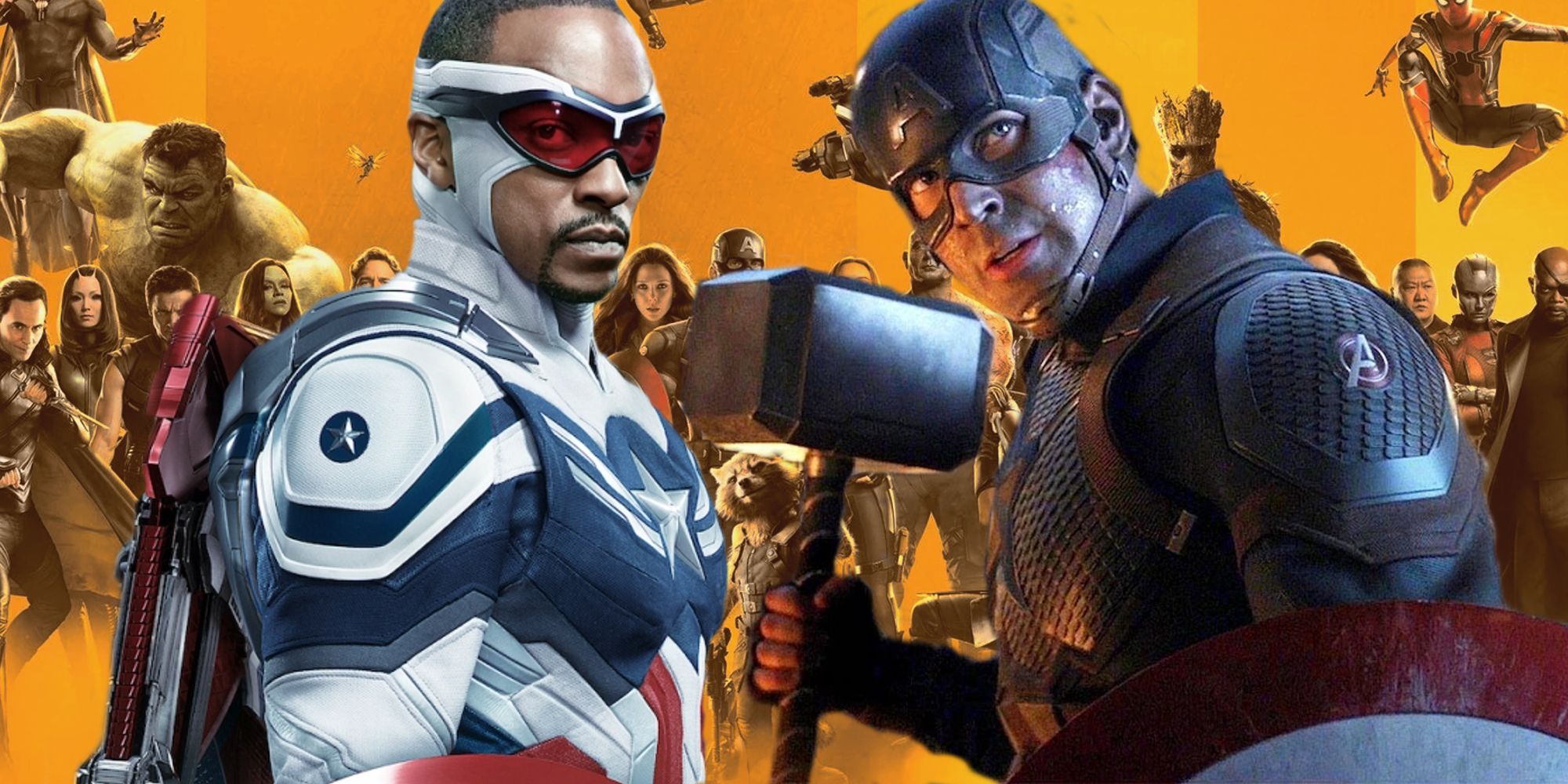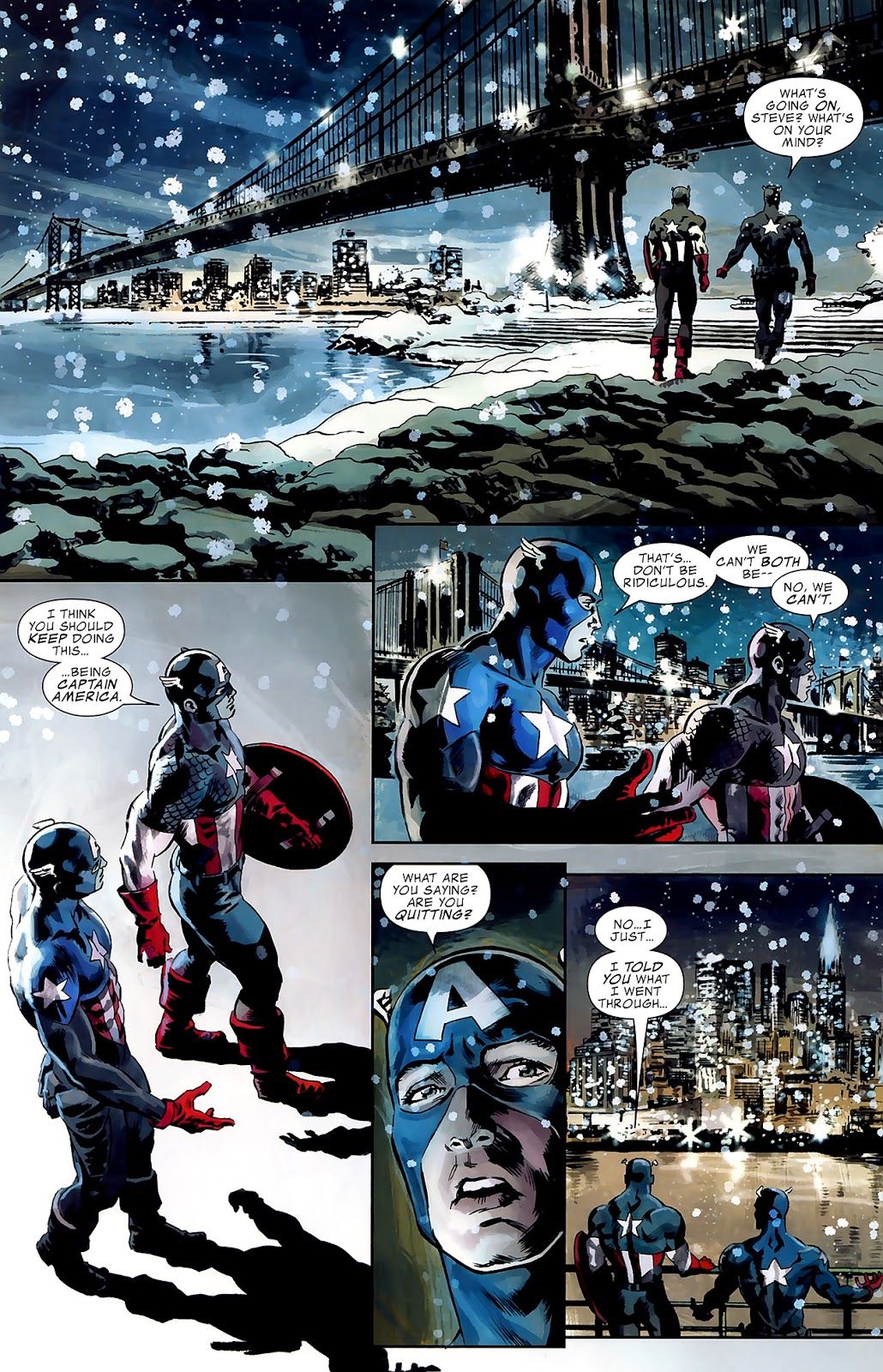The grand finale of the Avengers saga, *Endgame*, left many viewers scratching their heads, wondering about the rules of time travel. It is that, you know, a very big topic. A particularly big question that still gets folks talking today revolves around Captain America's final act. People often wonder, quite understandably, how did Captain America not mess up the timeline? It's a question that has understandably left a lot of people quite confused, truly.
The whole situation with Steve Rogers at the very end of *Avengers: Endgame* truly stirred up a lot of passionate discussion among fans. They disagreed, you see, on the exact timeline where Steve Rogers eventually settled down. Was it a brand new path he forged, or did he simply live out his days in the past of the main reality? This uncertainty, well, it just adds to the intrigue, doesn't it? It's almost a puzzle.
This discussion isn't just about Cap, though. Massive divergences in the prime MCU timeline are not isolated to Captain America's actions during the final scene of *Endgame*, you know. There are other instances, too, that illustrate the time travel principles at play. It's all part of a larger, somewhat complex, picture that the movie tried to paint for us, in a way.
Table of Contents
- The Core Idea of Time Travel in Endgame
- Captain America's Choice and Its Impact
- Fan Debates and Lingering Questions
- Unpacking the Confusion
- Frequently Asked Questions
The Core Idea of Time Travel in Endgame
The film *Endgame* really made an effort to establish its own set of rules for time travel, which is pretty important for figuring out how did Captain America not mess up the timeline. During the explanatory time travel talk, which was created for the benefit of the audience, thank you Marvel, there was a lot of warning about not irrevocably changing things by meddling in past affairs. It seemed to suggest that this sort of interference would result in an unpredictable amount of divergent timelines, or perhaps even worse, a timeline collapsing paradox. This explanation, you know, was a big part of the initial presentation.
However, the actual, final rule that *Endgame* settled on for its time travel mechanics is actually quite simple, yet it changes everything. It declares, very clearly, that if you time travel, you create a new timeline. This idea, you see, is the whole point of *Endgame* time travel. It means that messing with the past doesn't erase your present; instead, it just sprouts a fresh, new path for reality. So, there are no paradoxes in the traditional sense, just new branched timelines, which is a pretty distinct concept.
No Paradoxes, Just New Branches
This central concept is key to how did Captain America not mess up the timeline. It means that when someone travels back in time and makes a change, they are not altering their original past. Instead, they are simply creating a different version of reality that splits off from the main one. It's like a river splitting into two separate streams, you know, both flowing forward, but in different directions. This is a pretty fundamental distinction.
So, the movie's logic suggests that any trip into the past automatically generates a new reality. This prevents the classic time travel paradoxes, where, say, going back and stopping an event would erase your own existence. Instead, your original timeline remains untouched, and a new one simply begins where your actions took place. This is a rather clever way to handle the typical time travel issues, isn't it?
This specific framework means that any actions taken by the Avengers during their time heist, even if they seemed to change history, did not actually affect their prime MCU timeline. They simply brought forth other versions of reality. This is a very important point for understanding the overall story and how everything fits together, or rather, branches apart.
Loki's Great Escape, a Case Study
To illustrate this point further, we can look at another significant divergence that happened during the time heist. The 2011 incarnation of Loki, for example, used the Tesseract to escape to parts unknown following the Battle of New York. This happened due to Tony Stark and Scott Lang's tampering with the timeline, a sharp departure from his final fate in the original sequence of events. This, too, is a clear example of a new timeline forming.
This specific incident shows that massive divergences in the prime MCU timeline are not isolated to Captain America's actions during the final scene of *Endgame*. Loki's escape, you know, directly led to his own series, exploring the consequences of this new branched reality. It also raises the question: is Loki alive with the Space Stone in a new timeline or reality? The answer, according to *Endgame*'s rules, is yes, in a new one, apparently.
So, Loki's situation really reinforces the idea that time travel creates new branches. His sudden disappearance from his original path did not erase his previous actions in the main timeline, but rather initiated a whole new story for him in a different branch. This is a pretty clear demonstration of the movie's time travel mechanics at work, honestly.
Captain America's Choice and Its Impact
Now, let's get back to the core question: how did Captain America not mess up the timeline? Steve Rogers, as we saw, decided to stay in an alternate timeline so he could grow old with his true love, Peggy Carter. This choice, according to the established rules, means he simply created a new branch where he lived out his life. He didn't alter the history of the main timeline where he was frozen in ice and woke up decades later. This is a very important distinction.
If Steve had somehow stayed in the past of the *original* timeline, that would have caused a paradox. How could Captain America age in the 1940s without a paradox, for example, if he was also supposed to be frozen? The movie's time travel rules avoid this by stating that his choice to remain in the past automatically created a separate reality. This is a pretty neat trick, you know, to avoid those tricky time loops.
So, the popular understanding, based on the movie's own logic, is that Steve lived out his life in one of infinite parallel universes. He then returned home via Pym Particles at the end of his life to pass on his shield. This interpretation suggests that he truly didn't mess up the main timeline, but rather just lived a different life in a different, separate, reality. It's a rather elegant solution, if you think about it.
A Life Lived in Another Reality
The idea that Steve lived out his life in an alternate reality is the most consistent explanation with the rules *Endgame* lays out. This scene, where he returns as an old man, strongly suggests that he lived out his life in their own timeline, meaning a newly formed one. He didn't just quietly exist in the background of the main timeline, witnessing all the future events from the sidelines. That would have been a very different story, wouldn't it?
If he had lived in the original timeline, there would be too many questions. For instance, where did he get the new shield that he passes on to Sam Wilson? In the original timeline, the Tesseract was lost in the sea, and Steve was stuck in ice. Howard Stark searches for Steve and finds the Tesseract, giving it to S.H.I.E.L.D. for research. An older Cap living in that same timeline would surely have caused some noticeable ripples, wouldn't he? It's pretty clear.
So, the explanation that he created his own alternate timeline by staying in the past makes the most sense. It allows for his happy ending with Peggy Carter without causing any direct contradictions or paradoxes within the prime MCU continuity. This is what the film's own time travel rules essentially dictate, after all. It's a pretty straightforward way to look at it.
The Bench Conundrum
One of the most talked-about aspects of Captain America's return is how he appears as an old man. Instead of returning on the platform the Avengers use for time traveling, old Captain America appears a few moments later sitting on a bench by the nearby lake. This moment, you know, raised quite a few eyebrows and questions. It's never revealed how Steve actually made his way to the bench, which adds to the mystery.
This visual detail, however, has led some to believe that he *must* have lived in the original timeline. The argument goes that for Captain America to come back into his original timeline, he would need to use another Pym Particle device, change his outfit (since he needs the time traveling outfit), walk into that bench, and do all that in the exact time, plus, without anyone seeing him as he walks up to the bench. This is a very complex sequence of events to imagine, honestly.
But if he truly created a new timeline, then his return to the bench in the *main* timeline would require a separate, final jump from his alternate reality. This would still involve Pym Particles and careful timing, but it wouldn't imply he was secretly living in the main timeline all along. It simply means he came back for that one specific moment to pass on the shield. This is a crucial distinction, really.
Fan Debates and Lingering Questions
Despite the "you time travel = you create a new timeline" rule, there's still a lot of confusion about the rules of time travel that *Endgame* established. Fans continue to debate whether Cap created a new timeline for him and Peggy to live in, or whether he somehow existed in the main one. This ongoing discussion shows just how much people care about the details of these stories, you know, and how they fit together.
The fact that *Endgame*'s timeline is confusing but does make sense, as some sources suggest, points to the need for careful explanation. The initial warnings about "irrevocably changing things" or "a timeline collapsing paradox" might have led some viewers astray. This might be why so many people are still asking: did Cap create his own alternate timeline, or just live in the past in the main timeline? It's a pretty common question.
Ultimately, the creators of the movie have largely clarified that the branched timeline theory is the correct one. Steve Rogers, they say, lived out his life in a separate, parallel universe. This means old Cap couldn't have possibly been sitting on a bench in *their* timeline the whole time. This explanation aims to bring some finality to the debate about how did Captain America not mess up the timeline. It's pretty definitive, actually.
Did He Stay in the Main Timeline?
The idea that Captain America might have stayed in the main timeline, quietly living out his life, is a very persistent fan theory. This would mean he witnessed all the events of the Infinity Saga from the sidelines, which is a rather intriguing thought. It would mean that there were two Captain Americas in the same timeline for decades: the one who woke up from the ice, and the one who stayed back in time and grew old. This is a pretty wild concept, honestly.
However, this theory directly contradicts the explicit time travel rule stated in the movie: "You time travel = you create a new timeline." If Steve had remained in the original past, he would have, by definition, created a new branch the moment he decided to stay. So, the original timeline would have continued without his presence, and a new one would have begun with his continued existence there. This is a very important point.
The official word from the filmmakers and the subsequent *Loki* series, which further explores branched timelines, strongly supports the idea that Steve created a new reality. So, while the "hidden Cap" theory is fun to think about, it doesn't align with the established rules of the MCU's time travel. It's pretty clear, actually, that he didn't stay in the main one.
The TVA's Role and Two Caps
Another point of confusion for fans, especially after the *Loki* series, is why the TVA allowed two Captain Americas in the same timeline. One Cap woke up from the ice, as we know, and the other stayed back in time and grew old throughout the events of the Infinity Saga. This question highlights a potential perceived inconsistency, you know, that some people find troublesome.
However, the explanation from *Endgame*'s time travel rules provides an answer: the "old Cap" who grew up with Peggy did so in a *separate, branched timeline*. The TVA, as depicted in *Loki*, only prunes branches that deviate too much from the "Sacred Timeline" or that are not supposed to exist. If Steve's new life with Peggy was a stable, self-contained branch that didn't threaten the main flow, then the TVA might not have interfered. This is a pretty plausible scenario, arguably.
So, the two Captain Americas existed in *different* timelines, not the same one. The Cap who woke up from the ice continued his journey in the prime MCU reality, while the other Cap lived a full life in his own, distinct, alternate universe. This understanding helps to resolve the apparent conflict with the TVA's mandate, making the whole picture a bit clearer, you know.
Unpacking the Confusion
The core of understanding how did Captain America not mess up the timeline really comes down to accepting the specific time travel rules laid out in *Endgame*. The film makes a very strong statement: "You time travel = you create a new timeline." This rule, you see, is the ultimate answer to many of the lingering questions. It simplifies what might otherwise be an incredibly complex and paradoxical situation. It's pretty much the bedrock of their time travel logic.
So, when Steve Rogers went back in time, he didn't erase his past self or change the events that led to the Avengers' present. Instead, he simply branched off into a new reality where he could live out his desired life with Peggy Carter. This means the original timeline, the one we've been following all along, remained completely unaffected by his personal choice. This is a very important distinction, honestly.
The appearance of old Cap at the end was simply him traveling *back* from his branched timeline, using Pym Particles again, to deliver the shield to Sam Wilson in the prime MCU. He wasn't secretly living there for decades. This interpretation, you know, makes the most sense when you consider all the pieces of information the movie provides, and the subsequent clarifications from the creators. It's a pretty solid explanation, really.
It's fair to say that the way time travel was presented in *Endgame* was, in a way, designed to be understood in this specific manner. The discussions and debates among fans, while passionate, often stem from trying to apply traditional time travel tropes to a system that explicitly rejects them. So, the key is to remember that for the MCU, every trip to the past is a fresh start for a new reality. Learn more about time travel mechanics on our site, and link to this page Marvel's official explanation for more details.
Frequently Asked Questions
Did Cap create his own alternate timeline, or just live in the past in the main timeline?
Based on the time travel rules established in *Endgame*, Captain America created his own alternate timeline. When he decided to stay in the past, that action instantly branched off a new reality where he could live out his life with Peggy Carter. He did not simply live quietly in the past of the main timeline, witnessing future events from the sidelines. This is a pretty firm point from the movie's logic.
How did Captain America age in the 1940s without a paradox?
He aged in a newly created, separate timeline. The movie's time travel rule states that "you time travel = you create a new timeline." So, when Steve went back and chose to stay, he didn't alter the original history where he was frozen in ice. Instead, he began a new life in a distinct parallel universe, allowing him to age naturally there without causing a paradox in the prime MCU timeline. It's a pretty clever way to handle it, you know.
Is Loki alive with the Space Stone in a new timeline/reality?
Yes, absolutely. The 2011 incarnation of Loki used the Tesseract to escape to parts unknown following the Battle of New York. This event, caused by Tony Stark and Scott Lang's tampering, created a new branched timeline. So, that specific Loki is indeed alive in that new reality with the Space Stone, leading directly to the events of his own series. It's a clear example of how new timelines are formed, honestly.



Detail Author:
- Name : Jamel Lynch
- Username : mina36
- Email : rodger.kerluke@borer.com
- Birthdate : 2005-09-18
- Address : 154 Marlen Crescent South Ezrabury, WI 72043
- Phone : 641-403-0124
- Company : Murray LLC
- Job : Purchasing Agent
- Bio : Laborum qui aut sed quia blanditiis. Est dolore ut nobis natus.
Socials
facebook:
- url : https://facebook.com/buckridge1984
- username : buckridge1984
- bio : Recusandae sit eum repudiandae. Nemo recusandae aut quos libero sint.
- followers : 2056
- following : 2284
tiktok:
- url : https://tiktok.com/@buckridger
- username : buckridger
- bio : Perspiciatis voluptatum fugiat optio soluta voluptates distinctio dolor.
- followers : 812
- following : 1366